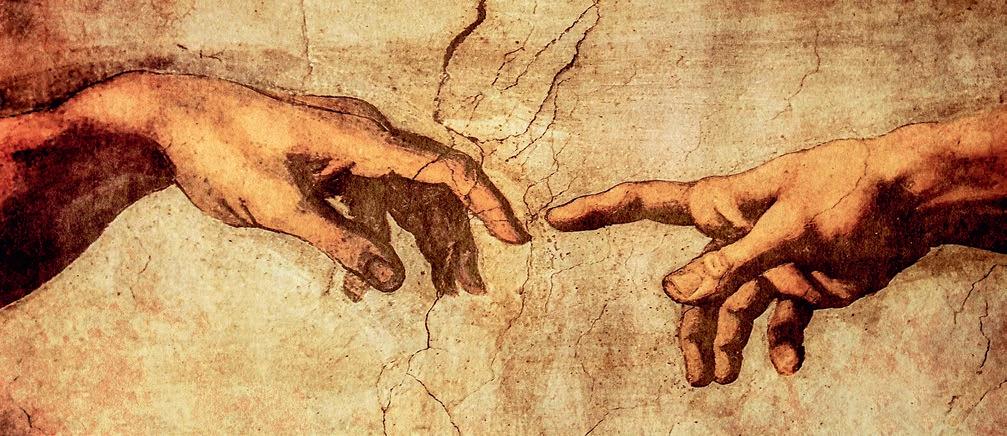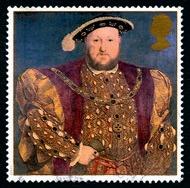TRACTION Purple
Engelska 6
Cecilia Stern Frisenfelds
Ann-Christin Santiago Pettersson

Studentlitteratur AB
Box 141
221 00 LUND
Besöksadress: Åkergränden 1
Telefon 046-31 20 00 studentlitteratur.se
Produktionsstöd till detta läromedel har erhållits från Specialpedagogiska skolmyndigheten.
Kopieringsförbud
Detta verk är skyddat av upphovsrättslagen. Kopiering, utöver lärares begränsade rätt att kopiera för undervisningsändamål enligt Bonus Copyright Access skolkopieringsavtal, är förbjuden. För information om avtalet hänvisas till utbildningsanordnarens huvudman eller Bonus Copyright Access.
Vid utgivning av detta verk som e-bok, är e-boken kopieringsskyddad.
Den som bryter mot lagen om upphovsrätt kan åtalas av allmän åklagare och dömas till böter eller fängelse i upp till två år samt bli skyldig att erlägga ersättning till upphovsman eller rättsinnehavare.
Studentlitteratur har både digital och traditionell bokutgivning.
Studentlitteraturs trycksaker är miljöanpassade, både när det gäller papper och tryckprocess.
Redaktion: Charlotte Rosen Svensson
Formgivning: Sten Melin Grafisk Form
Omslag: Sten Melin Grafisk Form
Art.nr 39523
ISBN 978-91-44-13317-1
© Författaren och Studentlitteratur AB 2023
Upplaga 1:1
Printed by xxxxxx, xxxxxx 2023
Welcome to Traction Purple!
Traction Purple will help you improve your English in a number of ways, and it also provides the materials you need to meet the requirements for and succeed in the English 6 course.
The digital material includes everything that you see in this book – and more. With Traction Purple you can work with book, pen and paper, or completely digitally. You can listen to all of the recorded texts (both reading and listening) on your computer, tablet or mobile phone, and you can also practise your English with all the digital exercises, and get instant feedback. Whenever you see a icon, that means there is a digital link that you can follow.
The seven units in Traction Purple all follow the same structure, and cover a wide range of topics and text genres. In every unit there are both longer and shorter texts, ranging from newspaper articles and factual texts to poems, song lyrics and excerpts from novels. There is at least one listening exercise in every unit. Some of these are very long, and you can choose to listen to them in parts if you prefer.
In the English Handbook you will find a guide to working on the productive language skills of writing and speaking, and on the receptive skills of reading and listening. The Handbook is an extra resource to help you when you need support. In it you can learn about the writing process, strategies for reading and listening, a literary timeline and useful literary terms.
In short, Traction Purple covers much of what you need to develop your language skills and complete the English 6 course successfully. We hope that you will find it fun and inspiring to work with.
Best of luck with your studies!
The Traction Purple team
1 RE-DISCOVERY 5
10 Ways Our World is Like the Renaissance 6
To Colonize Space or Not To Colonize 11
Listening: The Long Way to a Small, Angry Planet 16
Sonnet 15 When I consider everything that grows 21
2 REASON 27
Introduction to the Age of Enlightenment 28
A Modest Proposal 33
Cancel Me This, Cancel Me That 38
Listening: Frankenstein, or the Modern Prometheus 42
The Declaration of Independence 46
3 PASSION 51
Introduction to the Romantic Era 52
My Heart Leaps Up 53
Four Reasons We Listen to Sad Music When We’re Sad 55
Nothing Compares 2 U 58
Emily Brontë hits the heights in poll to find greatest love story 61
Listening: Jane Eyre 64
She Walks in Beauty 69
4 EMPIRE 75
Eminent Victorians 76
Oliver Twist 80
Gender roles in the 19th century 85
Listening: The French Lieutenant’s Woman 88
The Steampunk Revolution – For Real! 91
Listening: Sherlock Holmes: The Army of Dr Moreau 92
5 MODERNISTAS 97
What Is Modernist Literature? 98
Introduction to To the Lighthouse 100
Listening: To the Lighthouse 102
What Lips My Lips Have Kissed 106
A Brief History of Dada 108
6 MY RIGHTS 115
Progress 116
Stonewall Inn: Through the Years 117
Listening: Freedom or Death 120
Civil Rights Activism: From Martin Luther King to Black Lives Matter 125
South African Voices 129
Born a Crime 130
Listening: What is Your Life’s Blueprint? 132
7 ONWARDS 139
Listening: Want to Start Reading Sci-Fi and Fantasy? 140
Abaddon’s Gate 144
Listening: The Fifth Season 149
The 14 Main Literary Genres 152
ENGLISH HANDBOOK 156
WORD LISTS 180
Contents
1 RE-DISCOVERY


Learning never exhausts the brain. Leonardo da Vinci

5
before we get started
First listen to the introduction to this unit.
Classical antiquity
Exploration of new worlds
Humanism
Individualism
Renaissance
Secularism
Many of the ideas defining the Renaissance Period (14th to 17th century) have their origin in ancient Greece and Rome. In fact, the word renaissance means rebirth, meaning the revival of ideas from classical antiquity in new forms, suited to the growing cultural and scientific knowledge of the time. These ideas came to influence all levels of Renaissance society. When comparing the Renaissance to society today, it is evident that the two eras have many things in common.
10 Ways Our World is Like the Renaissance
By Stephanie Storey
1: Democratization of Information: We have the internet, but the Renaissance had the printing press. Gutenberg printed and sold his first Bibles in 1455; for the first time, information spread out of churches and schools. They had the same concerns we do: would this new “technology” change brains and society for the worse or would it free the world from the powers of the elite?
2: Dirty Politics: We aren’t the only era rife with political anger. The Renaissance was a time of particular political strife. The good news?

If you’re concerned about the state of our politics, remember that the Renaissance had King Henry VIII (pictured to the left), Machiavelli, Isabella I, King Ferdinand – tyrants and manipulators who regularly beheaded their enemies (and wives!) and advocated for ruthless selfempowerment. Battling factions went to literal war – I’m talking the cannon-firing, killing and raping kind of war – rather than just arguing it

6
VIII 5 10
Henry
out on Twitter. Although both eras have dirty politics at our centers, the rulers of the Renaissance make our current antagonism seem downright reasonable.

3: Nationalism versus Globalism: During the Renaissance, people from beyond homeland borders were considered barbarians. On the other hand, these were the years when Columbus was sailing the Ocean blue and new lands were being discovered. [...] Our current debate over closing borders or embracing the world is nothing new.
4: Alternative Facts and Fake News: One of the reasons I find the Renaissance so fascinating is because it was the heyday of spin. Take JUST ONE example: Pope Julius was known as Papa Terrible and the Warrior Pope, but late in his career, he needed his people to trust and love him. Check out this portrait by Raphael. Does Pope Julius look like a screaming, cursing warrior who would strike you over the head with a stick at any moment for disagreeing with him? No. Because this pope – and this era – was just as addicted to spin as we are!

5: Me-Centered Culture: Today we have selfies and social media, but it’s not much different than the rise of Humanism during the Renaissance. Gone were the days of focusing on spiritual matters; suddenly MAN was at the center of every conversation.
6: Idealism of the Past: The Renaissance was all about climbing out of the so-called “Dark Ages” and bringing about the rebirth of ancient culture. [...] Today, many of our people look backwards to some sort of ideal, too. It’s a natural human inclination, even if it is impossible to truly recapture the past.
7
Ocean blue | here, the Atlantic Ocean
Christopher Columbus received by King Ferdinand and Queen Isabella on his arrival in chains in Spain in 1500, painted by Francisco Jover
Portrait of Pope Julius II, painted by Raphael 1511–1512
5 10 15 20 25
spin | what people do when they retell a negative story to make themselves seem better
7: Fame Obsessed: With the Renaissance came the rise of celebrity. With the likes of Donatello, Botticelli, Leonardo da Vinci, Michelangelo, and Raphael, [...] suddenly an artist’s name – and fame – mattered when commissioning a work. Our modern-day obsession with celebrity culture is nothing more than a five-hundred-year-old obsession.

8: Joining of Art and Science: The Renaissance is famous for joining together the worlds of art and science to make advances never before imagined. Today, arts and sciences are joining hands once again as they stand together to support science and arts education. As these two forces work together – in Silicon Valley and beyond – imagine the Renaissance Men and Women that might emerge.

9: Hubs of Creativity: Speaking of Silicon Valley, [...] vibrant centers of creativity were central to the advancements of the Renaissance. San Francisco is a modern-day Florence, a hub of creative, brilliant people, coming together to create new things. When a bunch of ambitious people work side by side in the same city, they all strive to outdo each other – and thereby create marvels.

8
Florence 5 10 15
Silicon Valley – a valley in California, just south of San Francisco, where many top high tech and social media companies are based
10: Explosion of Invention: The Internet and Silicon Valley have no doubt changed the world. And our artists, scientists and inventors are stepping up to create new avenues in medicine, the arts, travel, communications. [...] Is this modern-day explosion of invention a result of our cultural climate being similar to the Renaissance? Or are these cultural similarities a result of living in an age of invention?
What does all of this mean? Are we living in an era of the next Leonardo da Vinci or Michelangelo? I don’t know. But I find the similarities between our two ages interesting and important to note. And I most certainly feel like we are living through an age that history will remember. [...]
Go to the word list.
Textwork

At first sight
Summarize all ten points in your own words. What similarities are mentioned? Write one or two sentences per point. When you are done, compare your summaries with those of a classmate.
Food for thought
Work in pairs or small groups. Discuss.
1. Will new technologies “change brains and society for the worse”? Or will they “free the world from the powers of the elite”?
a. On your own, write a list of examples of new technologies in recent years. For instance, inserting a chip in your body to unlock your front door. Hint: you might find it useful to consider Virtual Reality and Artificial Intelligence when thinking of your own examples.
b. When your list is done, share your examples in pairs or a group and discuss how your examples of new technologies might change our society for better and for worse.
2. At the end of the article, the author Stephanie Storey states: “I most certainly feel like we are living through an age that history will remember.” Based on what is listed in the text, what will future historians remember us by? And is there anything missing on this list?
3. Stephanie Storey starts her list by comparing the printing press with the internet. Think of the similarities between the printing press and the internet, based on what you have read. You might want to start by considering how information spreads. Write down 3–5 similarities. Then, compare your points with those of a classmate. Are your lists the same, or do they differ, and if so, how?
5 10
Close-up
1. Identify some more similarities and differences between the Renaissance and modern-day life. Here are some ideas to consider.
i. Things were better before: It is often said that things aren’t what they used to be. In what ways would you say that people today try to recapture the lifestyle of the past? (Point #6 in the text.)
ii. Renaissance Man: Renaissance artists like Michelangelo and Leonardo da Vinci were idolized and came to represent what is called Renaissance Man, meaning someone who knows a lot about many different subjects, and is accomplished in many different fields. They were the celebrities of their time. What celebrities today might qualify as modern Renaissance persons? (Point #7 in the text.)
iii. Humanity in the center: Renaissance Humanism focused on the potential and achievements of humans. Thinkers of the day wanted to promote new values by studying classical texts, which placed people, rather than, for example, God or religion, at the center of attention. How do you think the Renaissance definition of Humanism is incorporated in today’s worldview? What similarities and differences do you see? (Point #5 in the text.)
iv. Manipulation: Manipulative and scheming politicians existed during the Renaissance (such as King Henry VIII or Machiavelli), but can you think of a modern politician who might fit the same description? Why did you choose this person? (Point #2 in the text.)
v. Spin: According to the text, Pope Julius appears to have two sides: a “terrible” leader as well as someone who wanted to come across as trustworthy. Can you think of a current leader who manages or tries to spin the perception of himself like Pope Julius did? (Point #4 in the text.)
vi. Ideal body proportions: As mentioned in the text, the Renaissance artists joined art and science together. A good example is Leonardo da Vinci’s drawing “Vitruvian Man” (1485), in which he depicts his idea of the ideal proportions of the human body. What would you say are the ideal proportions of the human body today? And do you think that society’s idea of the ideal proportions is the same as your own? (Point #8 in the text.)

2. Do you agree?
What are your thoughts after reading the article? Do you agree with the author’s arguments that there are similarities between the Renaissance and the current era in which we live? Support your answer with examples from the text.

10
Vitruvian Man, by da Vinci
To Colonize Space Or Not To Colonize: That Is The Question (For All Of Us)
By Fred Kennedy, Dec 18, 2019
PART I
It’s time to ask ourselves the big question: Should we try to colonize our solar system, or not? I’ll readily admit I’m for it, and I suspect a large portion of the space community would stand with me – but this isn’t the space community’s decision, or in fact, any single nation’s decision. A broad consensus of commercial, civil, defense and international parties will be essential to an undertaking of this magnitude and complexity. Think of it – we’re considering moving large numbers of humans off their home planet, potentially not only for the rest of their lives, but for the lives of their descendants.
It’s important to distinguish between colonize and explore. Exploration already enjoys broad approval here in America. In June, 77% of U.S. respondents told Gallup pollsters that NASA’s budget should either be maintained or increased – undeniable evidence of support for the American space program (as it’s currently constituted). By any measure, we’ve done an admirable job of surveying the solar system over the past 60 years – an essential first step in any comprehensive program of exploration. Unmanned probes developed and launched by the United States and the Soviet Union conducted flybys of the Moon and the terrestrial planets not long after we reached Earth orbit, and since then, we’ve flown by the outer planets. Multiple nations have placed increasingly sophisticated robotic emissaries on the surfaces of the Moon, Mars, Venus and Saturn’s largest moon, Titan.
Most stunningly, in a tour de force of technology and Cold War chutzpah, the U.S. dispatched humans to set foot on another world, just 50 years and a few months ago. But after only six such visits, we never returned. Moon habitats in lava tubes, crops under glass domes, ice mining at the south pole? No. NASA’s Artemis program may place a man and a woman on the Moon again in 2024. But that’s hardly colonization. For perspective, let’s look closer to home.
Sailors from an American vessel may have landed on Antarctica as early as 1821 – the claim is unverified – but no scientific expeditions “wintered” there for another 75 years. The first two of these, one Belgian and one British, endured extreme cold and privation – one inadvertently, the other by design. And yet, 200 years after the first explorer set foot on the continent, there are no permanent settlements (partially as a result of a political consensus reached in the late 1950s, but in no small part due to
Gallup | a company that runs public opinion polls NASA | United States agency responsible for space program and research
chutzpah | confidence, which can include being rude or disrespectful to authority. Generally used in a positive sense.
11
5 10 15 20 25 30 35
Gizmodo | a design, technology, science and science-fiction website

the difficulty of extracting resources such as ore or fossil fuels through kilometers of ice). Less than 5,000 international researchers and support staff comprise the “summer population” at the bottom of the world. That number dwindles to just 1,100 during the harsh Antarctic winter, requiring millions of tons of supplies and fuel to be delivered every year – none of which can be produced locally. To suggest that Antarctica is colonized would be far overstating the sustainability of human presence there.
East India Company | European companies who, by starting trading between Europe and Asia, led to stronger ties between the regions geosynchronous orbit | an orbit which is the same as the Earth’s (24 hours)
If Antarctica is hard, the Moon, Mars, asteroids, and interplanetary space will be punishingly difficult. Writing in Gizmodo this past July, George Dvorsky describes the challenges to a human colony posed by low gravity, radiation, lack of air and water, and the psychological effects of longterm confinement and isolation inside artificial structures, in space or on planetary surfaces. Add to this the economic uncertainties of such a venture – where the modern analog of a Dutch or British East India Company would face enormous skepticism from investors regarding the profitability of shipping any good or finished product between colonial ports of call –and it becomes clear why nation states and mega-corporations alike have so far resisted the temptation to set up camp beyond geosynchronous orbit. Perhaps, many argue, we should focus our limited resources on unresolved problems here at home?
PART II
Yet a wave of interest in pursuing solar system colonization is building, whether its initial focus is the Moon, Mars, or O’Neill-style space habitats. Jeff Bezos has argued eloquently for moving heavy industry off the home planet, preserving Earth as a nature reserve, and building the space-based infrastructure that will lower barriers and create opportunities for vast economic and cultural growth (similar to how the Internet and a revolution in microelectronics has allowed Amazon and numerous other companies to achieve spectacular wealth). Elon Musk and Stephen Hawking both suggested the need for a “hedge” population of humans on Mars to allow human civilization to reboot itself in the event of a catastrophe on Earth – an eggs-in-several-baskets approach which actually complements the arguments made by Bezos. And while both are valid reasons for pursuing colonization, there’s a stronger, overarching rationale that clinches it.
I’ll assert that a fundamental truth – repeatedly borne out by history – is that expanding, outwardly-focused civilizations are far less likely to turn on themselves, and far more likely to expend their fecundity on growing habitations, conducting important research and creating
12
5 10 15 20 25 30 35 40
A proposed space colony, similar to what O’Neill suggested as a space habitat. Picture from: NASA Ames Research Center
wealth for their citizens. A civilization that turns away from discovery and growth stagnates – a point made by NASA’s Chief Historian Steven Dick as well as Mars exploration advocate Robert Zubrin.
As a species, we have yet to resolve problems of extreme political polarization (both internal to nation states as well as among them), inequalities in wealth distribution, deficiencies in civil liberties, environmental depredations and war. Forgoing opportunities to expand our presence into the cosmos to achieve better outcomes here at home hasn’t eliminated these scourges.
What’s more, the “cabin fever” often decried by opponents of colonization (when applied to small, isolated outposts far from Earth) turns out to be a potential problem for our own planet. Without a relief valve for ideological pilgrims or staunch individualists who might just prefer to be on their own despite the inevitable hardships, we may well run the risk of exacerbating the polarization and internecine strife we strive so hard to quell. Focusing humanity’s attention and imagination on a grand project may well give us the running room we need to address these problems. But the decision cannot be made by one country, or one company, or one segment of the human population. If we do this, it will of necessity be a truly international endeavor, a cross-sector endeavor (with all commercial, civil, and defense interests engaged and cooperating).
The good news: Critical technologies such as propulsion and power generation systems will improve over time. Transit durations between celestial destinations will shorten (in the same way sailing vessels gave way to steam ships and then to airliners and perhaps, one day, to point-to-point ballistic reusable rockets). Methods for obtaining critical resources on other planets will be refined and enhanced. Genetic engineering may be used to better adapt humans, their crops and other biota to life in space or on other planetary surfaces – to withstand the effects of low or micro-gravity, radiation, and the psychological effects of long-duration spaceflight.
As nation after nation lands their inaugural exploratory vessels on our Earth’s moon, and as billionaire space enthusiasts race to launch passengers, satellites and other cargo into orbit, it’s clearly time for us to sit down as a species and debate whether our future will be one highlighted primarily by growth and discovery, opening the solar system to settlement and economic development, or one that eschews outward expansion for conservation and preservation. Doing so would allow us to focus our attentions on this planet, leaving the solar system in its natural state, a celestial Antarctica stretching beyond Neptune.
I vote for growth. But one person, or one company, one community, one nation, isn’t a plurality here. This debate – postponed for more than 50 years – is one worth having. Humanity’s future will be decided by its outcome.
Go to the word list.
Practise the words in Wordmatch and Spelling.
critical technologies | technologies that are important for nations, especially in terms of defense and the economy
13
pilgrim | a traveller to a holy place
5 10 15 20 25 30 35 40
biota | plant and animal life
Textwork
At first sight
Answer the questions below.
PART I
1. According to the text, who should be able to decide if we should colonize our solar system?
2. What evidence is given to show that a majority of the American population supports the American space program?
3. What has been done to observe the solar system for the last six decades?
4. According to the text, when might humans set foot on the Moon again, and what is the program called that is planning this?
5. The text mentions examples of challenges when colonizing our solar systems. What are they?

6. Why have nation states and mega-corporations been skeptical about investing in the colonization of space?
PART II
1. According to the text, is the public interest in colonizing space increasing or decreasing?
2. What is Amazon founder Jeff Bezos’ intention with space colonization?
3. What does “hedge population” mean and why is it important?
4. According to the author of the text, Fred Kennedy, a civilization that turns away from discovery and growth stagnates; what two people does he cite to back up his argument?
5. According to opponents of colonization, what is the potential problem of small and isolated settlements far from Earth?
6. What examples of “critical technologies” are mentioned in the text?
7. What positive outcomes will be brought about by the improvements of critical technologies over time?
8. How would genetic engineering be used when colonizing space?
Match the words with the correct definition.
PART I
by design to take control of a people or area colonize to investigate or study by testing or experimenting consensus on or relating to the Earth explore general agreement probe according to plan terrestrial a display of strength or skill tour de force a device used to penetrate or send back information
PART II
to put all one’s eggs a community protected by a social or physical barrier in one basket cabin fever a person or thing that causes great trouble or suffering hedge population a statement of reasons rationale boredom or anxiety due to prolonged stay in a remote place running room sudden increase in interest scourge the space permitting flexibility to operate without impairment wave of interest to focus on one single area and risk losing everything
Food for thought
Work in pairs or small groups. Discuss.
1. Fred Kennedy is in favor of colonizing space. What are his main arguments in favor of colonization?
2. How does the author differentiate between exploration and colonization? Give examples to support your ideas.
3. When trying to explain why we should not speak of colonization of the solar system yet, the text makes a comparison with an American vessel that may have landed on Antarctica in 1821. How does this comparison work? Use arguments from the text to support your thoughts.
4. How does the eggs-in-several-baskets approach complement Jeff Bezos’ arguments? Would you say that Bezos’ arguments for pursuing colonization are legitimate?
5. In what ways can “cabin fever” be a problem for our planet, and what might be the solution to this?
6. The last sentence of the article is: “Humanity’s future will be decided by its outcome.” What does this refer to? Do you agree with this statement?

Close-up
1. There is a direct parallel drawn between the explorers of the Renaissance (for example, Christopher Columbus, Vasco da Gama) and Jeff Bezos and Elon Musk in the text. What are the similarities and what are the differences between the explorers from the different eras? Discuss the question in pairs or small groups.

2. We know what happened to the native populations in the places where the Renaissance explorers colonized. Can we learn any lessons from this, so that we do not repeat these mistakes if we discover other worlds in space?
listening : The Long Way to a Small, Angry Planet
Becky Chambers is an awardnominated science-fiction writer. Her work portrays people and aliens in future worlds far from planet Earth. This excerpt is from the author’s 2014 debut novel, The Long Way to a Small, Angry Planet. The story is set in Galactic Commons, a fictional universe, where the protagonist Rosemary Harper flees her old life to join the multi-species crew of the Wayfarer.

sims | short for ’simulator’ the sapient | here, short for the wise being
Go to the word list.
Practise the words in Wordmatch and Spelling.
16
Textwork
At first sight
1. What is the setting of the text?

a. a dome
b. a spaceship
c. a vessel
2. What is the reason for covering the steps with carpet?
a. for the guests to feel welcomed
b. to protect the wooden floor
c. so that the guide’s claws do not get stuck
3. What is a rec room?
4. How do we know that Rosemary hasn’t lived out in the open?
5. Why is ambient lighting important?
6. Who is Ohan?
a. a guest who likes to be awake during the night
b. a nocturnal, non-binary member
c. the guide who is neither human nor animal
7. What is the Fishbowl?
a. a popular dish
b. a greenroom
c. a room where you can see the galaxy outside
8. How does the crew get some privacy in the Fishbowl?
9. What is the purpose of the so-called scavenger buddies?
a. They help the crew find useful things.
b. They notify the crew when things need to be replaced.
c. They are friends of the crew.
10. How is the voice of the sapient, Dr. Chef, described?
a. It has a strange disharmony to it.
b. It is harmonious.
c. It sounds as if several people are speaking simultaneously.
11. Dr. Chef is a Grum whose biological sex is a “transitional being”. What does that mean?
12. What is Klip?
13. Who is Rosemary?
14. Who is Sissix?
Food for thought
1. Language acquisition
Work in pairs or small groups. Discuss.
a. Why is Klip a difficult language to learn?
b. In your own experience of learning a new language, what makes it difficult? Do you have any specific strategies? If so, what are they? What motivates you to learn a new language?
2. Character description
Have a look at the description below of Dr. Chef. If you were to draw a picture of this character based on the description, what would it look like? Share and compare your drawing with your classmates.
The sapient’s legs were especially difficult to categorize, because they could have just as easily been arms. He had six of them, whatever they were, all identical. When he came through the door, he’d been walking on one pair, and holding two tubs of food with the others. But once he set the tubs down, he folded his body down onto two pairs and walked to the counter.
“Well, well, well,” the sapient rumbled. There was a weird harmony to his voice, as if five people were talking at once. As she continued to process his appearance, Rosemary noticed that he was wearing Human-style clothing. His upper torso – if you could call it that – was covered by a huge short-sleeved shirt printed with a logo of a green Human thumb zooming through space. The surrounding text was printed not in Klip, but in Ensk: “Littlejohn’s Plant Emporium – Your One-Stop Shop for Transgalactic Hydroponics.” Extra armholes had been cut into the sides to allow for his middle pair of limbs. His lower section was covered by an enormous pair of drawstring trousers. Or not trousers. More like a pouch with room for legs.
The sapient’s whole face curved upward in a surreal approximation of a smile. “I bet you’ve never seen one of me before,” he said.

Close-up
1. Setting
a. What are the three useful purposes of the Fishbowl, according to Sissix?
b. Compare your answer to the previous question to city living today. How do people try to combine urban living with their longing for, or, perhaps, romanticized view of country living? What are the benefits and disadvantages of each?
c. Where do you see yourself living in the future, in the city or the countryside? Why?
2. Gender identity
a. What sex are the Grums?
b. Today, there is a debate about people’s right to decide their own gender identity. Do you think the author is making a point about this in this text, and if so, in what way?
Word World
1. Phrasal verbs
Phrasal verbs indicate actions. For example: look up, turn down, go through, make up, etc. Phrasal verbs often have meanings which cannot be understood from their individual parts. It is only when they are put together that they make sense. Separating the words would give a completely different meaning. The two words put together are:
VERB + PREPOSITION, ex: look after or VERB + ADVERB, ex: look up, turn down
The phrasal verbs in this exercise are taken from the text The Long Way to a Small, Angry Planet.
Example: After tucking away her two pieces of luggage […], Rosemary followed her guide back down the stairs.
Other examples are:
turn on get up stretch out bang up coop up slow down stand out think back pore over cut off
a. What is the Swedish translation of each phrasal verb?

b. Use each phrasal verb in a grammatically correct sentence.
c. Can you think of more phrasal verbs which are used in everyday English?
2. Gender-neutral language
“Especially Ohan. They’re nocturnal. Rosemary wasn’t sure who Ohan was or what Sissix had meant by the plural pronoun.”
This is a quote from the text and even though Ohan is one person, the pronoun referring to Ohan is they. This is a way of using a more inclusive language.
Gender-neutral language refers to words that do not identify a gender. There are several reasons why this is important, for instance:
• it eliminates certain words which exclude the female gender by only referring to man in the composition of the word, for example: fireman, chairman, policeman, freshman, manpower, mankind, man, etc.
• it eliminates other words which make an unnecessary distinction between the genders, even if the word man is not included in the word itself: steward/ stewardess, actor/actress, waiter/waitress, host/hostess, hero/heroine, landlord/ landlady, etc.
• it acts as a carrier for a message. It doesn’t stand in the way. When writing essays and other texts, it is important to keep a neutral language for the content in focus to come through.

What is the solution?
Instead of using the word “man”, find a gender-neutral word that includes all individuals.
20
fireman
chairman
policeman
freshman
manpower
mankind
man
1.
2.
3.
4.
5.
6.
7.
William Shakespeare (1564–1616) was an English poet, playwright and actor, considered by many to be the most influential writer in the English language.
The sonnet was a popular form of poetry during the Renaissance. The sonnets were not primarily written to be published, but thought of more as personal poetry, usually circulated among friends. William Shakespeare wrote no fewer than 154 sonnets during his lifetime, and the themes often dealt with love, beauty, decay, and time.

Sonnet 15: When I consider everything that grows
When I consider everything that grows
Holds in perfection but a little moment, That this huge stage presenteth nought but shows
Whereon the stars in secret influence comment;
When I perceive that men as plants increase, Cheered and check’d even by the selfsame sky, Vaunt in their youthful sap, at height decrease, And wear their brave state out of memory; Then the conceit of this inconstant stay Sets you most rich in youth before my sight, Where wasteful Time debateth with Decay
To change your day of youth to sullied night; And all in war with Time for love of you, As he takes from you, I engraft you new.
Go to the word list.
A sonnet is a series of fourteen lines (known as a stanza), made of three quatrains (four lines with a specific rhyming scheme) and a couplet (two rhyming lines)
Every line consists of ten syllables Each line consists of five iambs, a so-called iambic pentameter, where an iamb = one unstressed syllable followed by stressed syllable
The rhyming scheme of a sonnet
syllable | a unit of sound (There is one syllable in the word ’one’. There are three syllables in the word ’syllable’.) presenteth | archaic, presents debateth | archaic, debates
Practise the words in Wordmatch and Spelling.
21
a b a b_ c d c d_ e f e f_ g g
5 10
Textwork
At first sight
Understanding the text – line by line
What happens in each section of the sonnet? With the help of the keywords to each quatrain and the couplet, summarise what happens.
First quatrain
Keywords: growth, beautiful youth, brevity of life, stars predicting fate
When I consider everything that grows Holds in perfection but a little moment, That this huge stage presenteth nought but shows Whereon the stars in secret influence comment;
Second quatrain
Keywords: men compared to plants, growth and decay, beauty won’t last, death
When I perceive that men as plants increase, Cheered and check’d even by the selfsame sky, Vaunt in their youthful sap, at height decrease, And wear their brave state out of memory;
Third quatrain
Keywords: unstable life/world, young is rich, time is precious
Then the conceit of this inconstant stay Sets you most rich in youth before my sight, Where wasteful Time debateth with Decay
To change your day of youth to sullied night;
The concluding couplet
Keywords: time, love and/or beauty and/or death, immortality
And all in war with Time for love of you, As he takes from you, I engraft you new.
Food for thought
On your own, come up with three possible themes for the sonnet. When you are done, take turns sharing your thoughts in small groups.
Discuss:
a. Does the sonnet have a first-person or a third-person narrator?
b. One example of a theme could be “time versus decay” (see example in detail in Close-up on page 23). How is that theme exemplified in the text?
c. What do you consider to be the theme of the sonnet?
d. What, in your opinion, is the message of “When I consider everything that grows”? What do you believe the author wants to say with this text?

Close-up
1. Form and technique
What makes “When I consider everything that grows” a sonnet?


a. How many lines does the sonnet have?
b. How many syllables does each line have?
c. What is the rhyming scheme?
d. How would the sonnet be recited, following the pattern of the iambic pentameter?
2. Literary analysis
Theme: Time versus Decay
This is one example of a theme that runs through the sonnet.
a. Find as many examples of this theme as you can – it can be words, or a whole line, or iamb, or message.
b. What is the solution to the decay of time, i.e. what is the narrator’s way of keeping his friend/lover alive?
i.e. | id est, which is a Latin expression meaning “that is”
23
Speaking
1. Fear of the unknown
In the first text in this unit (“10 Ways Our World is Like the Renaissance”), foreigners were considered “barbarians” during the Renaissance. This is true of some contemporary societies as well since people, throughout history, have feared and continue to fear the unknown. How do we look upon strangers or foreigners today?
2. O’Neill cylinder – an O’Neill space habitat or colony
An O’Neill cylinder is a proposed space settlement for the 21st century using materials from the Moon. The settlement was proposed by the American physicist Gerard K. O’Neill in 1976. He had calculated how the cylinders could rotate to provide artificial gravity, in order to enable long-term human habitation.
The concept of an O’Neill space habitat is mentioned in the text “To Colonize Space Or Not To Colonize: That Is The Question (For All Of Us)” by Fred Kennedy. In it, comparisons are made between Jeff Bezos’ interest in space for economic and cultural growth to Stephen Hawking’s interest in space colonization as a means of rebooting human civilization in case of a potential catastrophe on Earth.

a. In a small group, discuss:
i. When do you think that space colonization will be possible?
ii. What kind of colonization will there be, and what will it look like?
iii. Who are likely to be the first colonizers?
iv. Can you see yourself being part of this? Why or why not?
b. Then write a list with three arguments in favour of, and three arguments against colonizing space.
3. To colonize or not to colonize? Debate
Divide into two teams. One is to argue for colonization of our solar system (pro), and the other is to argue against colonization (con).
Work in your teams to prepare relevant arguments for or against colonization. Support your arguments with examples and/or evidence. Use examples from the texts in the unit and/or look up information online.
Each team chooses a few students to represent them and their arguments.
One or two moderators will run the debate by keeping track of time and making sure that the two sides speak in the right order. See page 159 in the English Handbook for information on debating.
24
Writing
1. Travel leaflet or website
Write a compelling travel leaflet to tempt people to visit a new space colony. You can include the following points:
• name of the location
• description of location (anywhere but planet Earth)
• climate and weather conditions
• accommodation
2. Where science meets art
• fun facts about the area
• recommended things to do
• reviews
• estimated cost per person
• how to get there
Science and art have often been considered to be two separate disciplines, but the influence they have upon each other is considerable. The intersection of science and art is where many innovations and inventions are created.
One of the most famous examples of this is in the work of Leonardo da Vinci, who used his extensive scientific study to reproduce the world around him in his art, creating such well-known paintings such as The Last Supper and Mona Lisa and created flying machines after having observed how birds fly.
Write a short description of an important invention created in the intersection of science and art. If you have difficulties coming up with ideas, consider the inventions of Samuel Morse (1791–1872) or Galileo Galilei (1564–1642).
3. A modern Shakespeare
a. Translate “When I consider everything that grows” into modern English.
b. Write your own sonnet, following the format of a Shakespearian sonnet.

4. Celebrity culture
What does our modern-day obsession with celebrity culture look like?
Based on what you have learned in this unit about celebrity cultures during the Renaissance compared to today’s obsession with celebrities, write a compare and contrast essay about views on celebrities then and now. Use examples from the different eras to support your ideas. See page 172 in the English Handbook for guidance on writing a compare and contrast essay.
5. To colonize or not to colonize
After the debate in Speaking #3, choose one of the following assignments.
1. Write an argumentative text explaining why you believe it is a good or bad idea to colonize space by presenting arguments both for (pro) and against (con). See page 171 in the English Handbook for more information on how.
2. If you do think colonization is a good idea, write a brochure or advertisement, seeking people to join you. See page 174 in the English Handbook for help on writing a brochure.
Connect the dots

As shown in this unit, there are many parallels between the Renaissance and today, for example in technology and science. Find two or three areas or ideas where you believe this is true.
Remember to support your ideas with examples. The texts or the keywords from the beginning of this unit may help you get started.
Classical antiquity
Exploration of new worlds
Humanism
Individualism
Renaissance
Secularism
a. In pairs or small groups, prepare your areas/ideas to participate in a discussion. Then, take turns presenting your ideas (do not interrupt the person who is presenting their ideas). Finally, discuss your ideas and see if you can rank them from most to least relevant.
b. Write a five-paragraph essay discussing one or more of the areas or ideas that you have talked about. See page 170 in the English Handbook for more information on how.
26
TRACTION Purple
Traction Purple för Engelska 6 är ett tydligt och strukturerat läromedel för gymnasiets högskoleförberedande program. Elevpaketet innehåller ett digitalt läromedel och en tryckt bok.
I det digitala läromedlet finns samtliga texter, övningar och resurssidor inlästa med autentiska röster. Här finns också självrättande övningar för träning av glosor, grammatik, språkriktighet samt läromedlets alla hörövningar. Det digitala materialet är tillgängligt på dator, surfplatta eller mobiltelefon.
Elevboken innehåller en mängd olika texttyper, och eleverna möter dem i fast ordning. I boken finns artiklar, facktexter, skönlitteratur, dramatik och lyrik, såväl kortare notiser som längre textstycken. I avsnittet English Handbook ges vägledning i det egna språkutvecklande arbetet med talande, skrivande, läsande och lyssnande.
Licensen som ingår i elevpaketet varar i fyra år och kan ärvas mellan elever.
Traction Purple för Engelska 6 finns även som digitalt läromedel:
Elevlicens ISBN 978-91-44-13320-1
Klasslicens ISBN 978-91-44-13319-5
Första upplagan
Art.nr 39523
studentlitteratur.se



































